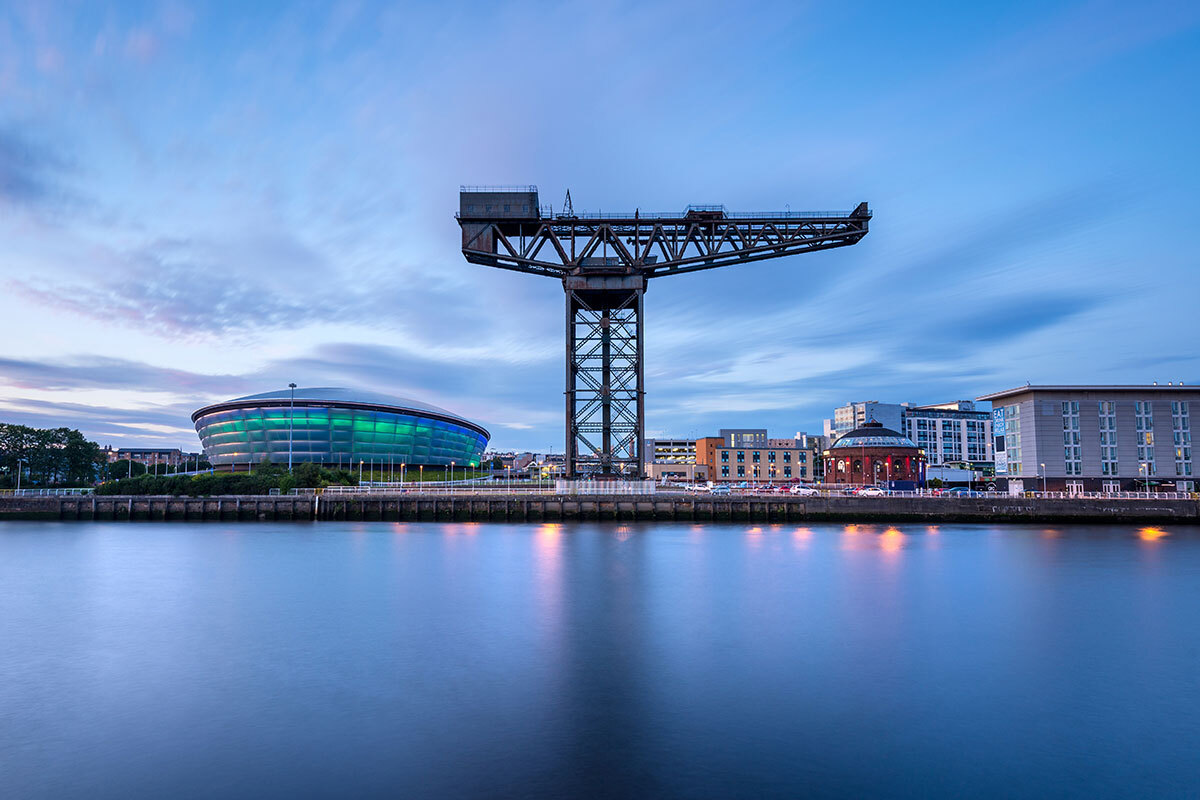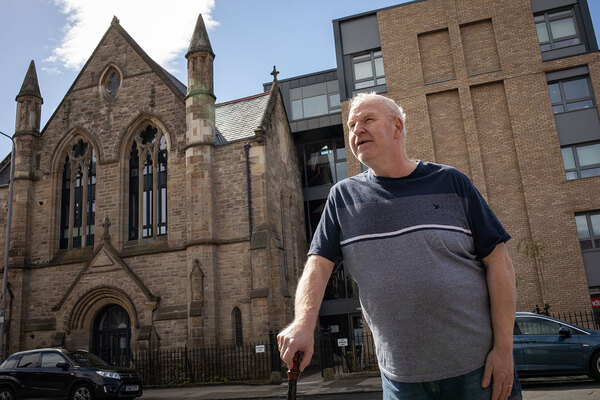
Duncan Smith is chief operating officer at AECB, and a board member at CIH Scotland
How Scotland can launch a green revolution on the banks of the Clyde
With climate change negotiations coming to Glasgow, it is already time for us to act – as a sector and as individuals, says Duncan Smith
This is my grandfather’s crane. He worked on this, and several other Titan cranes on the Clyde, between the 1930s and the 1950s. This one lifted steam locomotives and tanks, made in the north of Glasgow, on to ships for export around the world from Peru to Palestine. In its day it could lift 175 tonnes or the equivalent of an Airbus A350-941.
The Finnieston Crane, as it’s known locally, looks over the venue where the UN Climate Change Conference of the Parties (COP26) negotiations will be hosted in Glasgow later this year.
“While it’s nice that my hometown will spend some time in the winter limelight, I’m sure I speak for many Glaswegians when I say that we’d be far happier if we’d already solved climate change”
For a couple of weeks in November, the eyes of the world will be focused on the negotiations that’ll take place between nation states, and their governments, over a range of issues and the measures that we, as humanity, will need to implement to limit the effects of climate change and keep the temperature rise to under two degrees.
The seriousness of the current situation shouldn’t be lost on us. While it’s nice that my hometown will spend some time in the winter limelight, I’m sure I speak for many Glaswegians when I say that we’d be far happier if we’d already solved climate change, or were halfway through a much more advanced “decarbonisation” plan that every president and prime minister on earth had signed up to long ago.
We’re not, though. And the reality is that many think we’re barrelling toward a four-degree rise by the end of the century. The best we can probably hope for is damage limitation, rather than any reversal, over our lifetime at least.
The effects of climate change will be felt much more keenly by our children and grandchildren. My daughter will be in her mid-20s by 2040 and my son in his late 30s by 2050.
I worry that they won’t have anywhere near the same opportunities that I had, and that they will be burdened with the legacy that our generation leaves them. What will that legacy be? Part of that question will depend on what is agreed at COP26 in Glasgow.
“The rebirth of Glasgow from the 1960s to today was a long, difficult and painful process. Many lost out, unable to find the same type of work, or purpose, that they knew in the yards or the factory. And now societies and economies across the world must undergo another transition”
It’s perhaps fitting – given what we need to do in terms of decarbonising our economy and our workforce, and transitioning to a zero-carbon society – that Glasgow is the backdrop to COP26. Scotland – and Glasgow in particular – has been here before. From the heavy industry of the 19th and 20th centuries, to the service, retail and hospitality sectors of the 21st century.
The rebirth of Glasgow from the 1960s to today was a long, difficult and painful process. Many lost out, unable to find the same type of work, or purpose, that they knew in the yards or the factory.
And now societies and economies across the world must undergo another transition, this time far greater in terms of scope and size, given the task at hand. We need to learn the lessons from the past.
We need to move away from fossil fuels for heating, energy and transport. We need to eat less meat and choose to shop more sustainably, whether it’s for food or clothing. We need to consume less and conserve more across a range of sectors. We need to become better custodians of that legacy we want to hand over to our children.
Here in the UK, about 14% of carbon emissions come directly from heating and hot water within our homes. This is where we can all make a difference, as individuals, with the choices we make over the coming years, regardless of what is or isn’t agreed at COP26.
Having worked in the housing and construction sector for most of my life, I think we need to tackle things head-on. Sure, we need to decarbonise those homes being built today, but more importantly we need to focus on those that already have been built, of which make up about 80% of the homes that will be around in 2050.
We need to develop practices and processes around retrofitting our homes so we can reduce the demand for energy. We need to redefine what type of housing product we design and deliver – both within a new build and existing context, whether that be private or social rented.
“We need to redefine what type of housing product we design and deliver – both within a new build and existing context, whether that be private or social rented”
But we need to ensure that the transition to a zero-carbon world is done in a way that is sustainable, not just for the environment, but for tenants and owners alike. And at the same time expand and reskill our workforce to install, commission and maintain homes to higher standards with competent technicians looking after them.
Climate change poses “the biggest threat to security that modern humans have ever faced”. Dramatic but true – not my words, but those of David Attenborough.
But how we deal with it also presents us with a once-in-a-generation opportunity. An opportunity that wasn’t on offer to the previous generation who worked in the yards, but should be to our children.
That opportunity is about how we transition to new ways of working within a new system – a system that provides jobs that are sustainable, rewarding, higher skilled, better paid and more fulfilling to those employed in them.
We shouldn’t wait for COP26 in November before we start.
Duncan Smith, Chartered Institute of Housing member, working in asset management in Scotland











